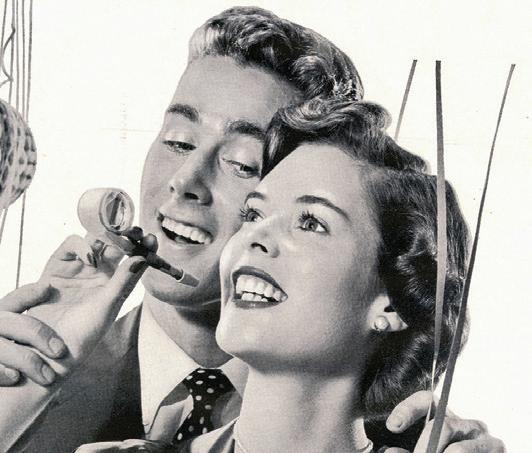

OH, THE TALES WE TELL!
As any dentist can tell you, all of their patients floss daily — multiple times, in fact — and brush carefully and thoroughly after every meal. And even after every snack. It is a wonderful thing to have such compliant patients who actively protect their health.
It’s also heartwarming that even patients whose teeth are terribly stained by tobacco and who smell like walking ashtrays heaping with cigarette butts do not smoke. If you doubt this, simply ask them and they will verify their abstinence and explain that their condition is the result of second-hand smoke.
We put out the call to find out what some of you have heard in your interactions, and as it turns out from various sources, you’ve heard plenty:
“A patient came in, a known diabetic, to get his blood sugar checked. Finger stick comes out greater than detection limit. I draw blood for an A1C and glucose. Blood sugar is 400+. Meanwhile the guy is telling us without question his diet is spot on. Can’t imagine why this would happen. He is treated and released. I go to lunch and get gas on the way back to work. At the convenience store I see the same guy buying a soda and pizza sticks. That darned blood sugar and it mysterious workings!”
“I am the lying patient. I’m a type 1 diabetic, and back in the day my endocrinologist wanted my blood sugars recorded on an excel spread sheet. I never took my blood sugars, never took my insulin. So the day of my appointment, I would just type in random numbers ranging from 50-300 on the spread sheet. For the most part my doctor was very impressed when he saw my numbers. That all changed when my A1C came back at 15. I was fired as a patient that day.”
“I was an intern doing my ER rotation and a woman in her late 30s or so came in complaining of nausea and lower abdominal discomfort for the last few days. I did the diligent history taking and of course, asked her about the possibility of her being pregnant. She completely went off on me, said she was a lesbian and had not been with a man for 10 plus years. Yelled at me to get my boss and let an ‘adult’ treat her.
I reported back to my attending with the tests I wanted. ‘I didn’t hear anything about a pregnancy test,’ he said. I explained that the patient is a lesbian and hasn’t been with a man in 10 years. He just smiled and said, ‘Humor me.’ Yep. She was pregnant.
I went back to her room later to give her the news. She couldn’t even look me in the eye.”


DOCTOR: Have you completely avoided chocolate as I instructed? PATIENT: Absolutely. 100 percent.








PARENTHOOD
by Dr. Warren Umansky, PhD
You are concerned about suicide because of all you have seen and heard in the news about it. Even scarier is that you have relatives and friends who have died by suicide. Your child appears happy most of the time, seems to have a good group of friends, and is getting good grades in school, but she has periods of time when she seems sad. What can you do?
A. Find out about teen suicide prevention programs in your community and enroll her.
B. It seems as though your child is doing okay. Don’t worry about it.
C. Stop paying attention to the news. It seems like there is an epidemic of pre-teens and teens taking their own lives, but it’s just media hype.
D. Yes, your child seems to be doing well and doing the right things. You’re not sure if that’s enough. You make sure to engage your child in conversation daily. You keep up with her grades on the school’s parent internet portal and she’s aware that you’re checking on that. You make sure the family sits at meals and eats and talks together. You keep her from isolating herself in her room, especially with electronics. You encourage her to be involved in sports, music activities, school clubs, and church, temple or synagogue activities.
If you answered:
A. You are wise to want to act early and learn about suicide prevention programs. Regrettably, a recent systematic review of 65 studies evaluating suicide prevention programs for highrisk youth concluded that the evidence of their effectiveness is uncertain. That does not mean that there aren’t approaches you can follow as a parent. Check out what parent D above is doing, and keep reading.
B. Parents should take pride in the successes of their children. Caring parents never stop worrying and never stop being vigilant and supportive.
C. It is not hype. Suicide is the third leading cause of death among adolescents and the numbers are rising. Following the strategies of Parent D above may make it less likely that your teen will be a part of that statistic.
D. You recognize that appearances are not enough. You take the time to be involved in your teen’s life. You are protective and inquisitive, but you give her space when she shows she makes trustworthy, responsible decisions. You take your parental role very seriously, as you should. You have brought a child into the world and it is your responsibility to put her needs above your own, to communicate to her a vision for a successful future, and to be sure she has the tools to achieve that success. And, that sadness that your daughter shows periodically even with your healthy involvement? While the research does not support the benefits of structured program, having someone else for your child to talk to might help her. Talk to the school counselor or get a referral to a mental health professional from your pediatrician. Also, remember that the Suicide and Crisis Lifeline is available around the clock at 988.
Dr. Umansky has a child behavioral health practice in Augusta.

THOUGHTS ABOUT THOUGHTS THOUGHTS
THROUGH THE LOOKING GLASS ALICE IN WONDERLAND SYNDROME
Editor’s note: Written by local mental healthcare professionals, this series shares thoughts on how people think and act when affected by common and not-so-common mental health conditions.
Sarah, a 15-year-old high school sophomore, was reading in her room one afternoon when she suddenly noticed her hands looked enormous—ballooning before her eyes. Moments later, as she walked to the kitchen, the hallway seemed to stretch and twist, as if she were shrinking like Alice falling down the rabbit hole.
These episodes, lasting just a few minutes, were terrifying and disorienting. Sarah was convinced something was wrong with her vision—or worse, her brain. After multiple visits to specialists, she was diagnosed with Alice in Wonderland Syndrome (AIWS), a rare but fascinating neurological condition.
What Is Alice in Wonderland Syndrome?
AIWS is a rare disorder of perception, named after the famous scenes in Lewis Carroll’s novel Alice’s Adventures in Wonderland, where Alice experiences sudden changes in her body’s size and shape. First described in 1955 by British psychiatrist John Todd, AIWS is characterized by distortions in body image, visual perception, and the sense of time.
Though often associated with migraines, AIWS can also occur in relation to infections (especially Epstein-Barr virus), epilepsy, head trauma, or certain medications.
Signs and Symptoms
The hallmark features of AIWS include:
• Micropsia: Objects appear smaller than they are.
• Macropsia: Objects appear larger than normal.
• Metamorphopsia: Objects appear distorted in shape.
• Pelopsia and Teleopsia: Objects seem closer or farther away than they really are.
• Body Image Disturbances: A person’s own body parts may feel abnormally large, small, or disproportionate.
• Time Distortions: Time may seem to speed up or slow down.
Episodes typically last a few minutes to a half-hour and often go away on their own, though they can be frightening.
What Causes AIWS?
While the exact cause is not fully understood, AIWS is believed to involve abnormal electrical activity in the brain’s visual and sensory processing areas, particularly the parietal and occipital lobes. Common triggers and associations include:
• Migraine (especially in children and adolescents)
• Viral infections (notably Epstein-Barr virus)
• Temporal lobe epilepsy
• Head trauma
• Certain medications or hallucinogens
AIWS can also occur in otherwise healthy individuals without an identifiable cause.
Treatment and Management
There is no specific treatment for AIWS itself. Instead, management focuses on treating the underlying cause:
• Migraine Management: Preventive and acute migraine treatments can reduce the frequency of AIWS episodes in migraine sufferers.
• Infection Treatment: Viral infections will usually go away on their own; supportive care may be recommended.
• Medication Review: Medications can also be adjusted if they are identified as the trigger.
Education and reassurance are essential, as the episodes are benign but can cause major anxiety, especially in children.
Prognosis
The prognosis for AIWS is generally good, especially when linked to a temporary cause like a viral illness. Many children outgrow AIWS as they age. However, for those with chronic migraines or epilepsy, episodes of AIWS may happen again during flare-ups.
Debunking Misconceptions
A common myth is that AIWS is a purely psychiatric condition. In fact, while the symptoms are bizarre and disorienting, AIWS is a neurological phenomenon, not a sign of psychosis or mental illness. Misunderstandings about AIWS can lead to unnecessary psychological labeling or fear of brain tumors—both of which are rarely the case.
Integrated Psych Solutions (IPS) provides comprehensive behavioral health services including assessment, therapy, and treatment planning for individuals and families managing both common and complex mental health conditions. To schedule an appointment, call 706-204-1366 or visit integratedpsych.care.

“When writing notes we will include Subjective notes- what the patient reports, and Objective notes- what we observe. So, for example I would write, Subjective- patient reports never taking drugs, Objective- patient has injection marks on arm.”
“In college, my roommate (who I wasn’t particularly close to) showed up in our room stumbling around drunk. There had been a home football game, so I didn’t think anything of it. An hour later she’s acting dangerously drunk, but was insistent she didn’t have anything to drink, so I decide to take her to the ER.
Turns out she’s diabetic and didn’t think that was an important enough detail to mention to the doctors at any point in the three hours we’d sat there. The doctor only realized it when her blood tests came back, although she then admitted that she’s known for years and takes daily insulin shots (which she also never told them - or me - about).”
I WALK FIVE MILES EVERY DAY!

“I’ll ask, ‘Do you have any medical problems?’ ‘No,’ they answer. Next question: ‘Do you take any medications?’ They’ll list like 50. Alrighty then.”
“A few years ago, a man came in complaining of a terrible cough, chest pain, and fatigue. I asked him if he had a history of smoking. Naturally he said no. Eventually he was discharged. About an hour later on my way home, I stopped to get some food and there he was, smoking outside McDonald’s.”
“I hate it when you’re working up a patient and they mention something simple, but then when the doctor comes in they add chest pains, trouble breathing... You just asked the person and they said nothing about that. Now I look like an incompetent idiot.”
“It is amazing how many people accidentally flush their pain pills down the toilet, lose them, have them stolen, or have pharmacists who deliberately short them on the number of pills they were supposed to get. Just amazing.”
“A frequent flyer who is known to fake assorted illnesses gets wheeled into one of the rooms in the ER. This time the patient is faking seizures. One of our ER docs pulls a nursing student over to the bedside and explains how to test if it’s a real seizure. When he holds the patient’s arm up, he explains, it will stay up in the air if the seizure is real.
Sure enough, when the doctor raises the patient’s arm in the air and then lets go, the arm magically stays upright. The doc let the patient keep their arm up there for a good five minutes before finally calling them out.”
“I don’t drink.” ‘Sir, your blood alcohol level would kill a normal man and I can smell you from across the department. Also you fell over twice trying to stand up.’ At least that’s what I wanted to say.”
“Do you smoke?” “Nope. Quit five years ago.” “You’re left handed?” “I am. How did you know?” “You have nicotine stains on the fingers of your left hand.” Oops
“Dentist here. The man that owns a nail salon across the parking lot from my office is my patient. Every 6 months I ask him if he smokes. Every visit he denies it. And yet every day I watch him from my office, smoking cigarettes out on the sidewalk. Sometimes I wave.”
“Several times my office attempted to call a patient I’ll call Mr. Smith. Every time, the one who answered the phone was Mrs. Smith, who basically said, ‘I’m his wife, so you can talk to me.’ Mrs. Smith was not listed on any consent form, so we explained HIPAA guidelines to her and said we could only speak with Mr. Smith. Mrs. Smith said ok, let me get him, then comes back on the phone using a deeper voice and says, ‘This is Mr. Smith.’”



WHAT IS

KWASHIORKER?
It’s quite possible you’ve never heard of kwashiorker, but it is highly unlikely that you’ve never seen someone suffering from it, at least in a photograph.
Kwashiorker (pronounced kwashee-OR-ker) is a paradoxical, counterintuitive condition. It is the affliction that results in people having a distended belly even though they are literally starving to death.
Appropriately enough, the word comes from Africa, frequent famine site, and roughly translates to “the sickness the baby gets when the next baby is born.” In one word, it describes what happens when a child is weaned too early — often because a new sibling has been born — and the result is poor nutrition, which can trigger kwashiorker.
But what is it?
Kwashiorker and the unmistakable appearance it gives to those afflicted with it is caused by a diet lacking in protein. There may be sufficient calories from carbohydrates like corn and rice, but the deficiency in protein causes fluid imbalances. Proteins like albumin help keep fluids inside blood vessels; without sufficient protein, fluid leaks into body tissues, particularly the abdominal cavity. Fluid accumulation in the abdomen is called ascites (uh-SIGH-teez).
Complicating matters beyond kwashiorker and ascites, liver disease is also a frequent component of the slow death brought on my malnutrition. The diseased liver is enlarged and adds to the overall abdominal swelling.
As malnutrition progresses, muscle tone is progressively lost, weakening abdominal muscles and increasing the belly’s protrusion, all made even more striking by the contrast with skeletal arms and legs.
Incidentally, as of 2024, about 9% of the world’s population experience chronic malnutrition, but a broader definition that includes those who lack consistent access to sufficient food (called “moderate to severe food insecurity”) elevates that number to 28%. +



(The name of Pinocchio’s dog is Five Miles)

Who is this?

Last time we checked, the name of this newspaper was the Medical Examiner. So why are we profiling this man, John S. Billings, the one-time president of the American Library Association? And while he wasn’t exactly an architect, he did have a significant side gig as a building designer too. Born in Indiana in 1838, Billings wanted to do something unusual at the time: go to college. But Billings had a proposal to offer: he would renounce any inheritance due him if only his father would allow him to attend college. For his part, the father renounced any possibility of being named Father of the Year by agreeing to the idea, and young Billings entered Miami University of Ohio at age 14. Yes, he was something of a brainiac; he had been schooled in Latin and Greek, and he spent most of his five years at the university reading in the library.
He graduated second in his class in 1857, and the following year was admitted to what is today known as the University of Cincinnati College of Medicine. He was awarded his medical degree in 1860, and opened a surgical practice while also serving as an anatomy instructor at his alma mater. At this point in his career, he still probably would not have rated a profile on this page in the far-off year of 2025. But things were about to change.
Rather than remaining in private practice, Billings took an exam in 1861 to serve in the medical corps of the Union Army. Although he had the highest score of any applicant, no field positions were open at that moment, so he was assigned to Union Hospital in Georgetown (Washington, D.C.) as an assistant surgeon. He served through the Civil War at several hospitals kept busy treating thousands of wounded soldiers.
After the war, Billings’ medical and academic careers came together handily when he was appointed to be the director of the library of the Army Surgeon General. There was probably not another person in the entire country more perfectly suited to this assignment than John Billings. He transformed a tiny collection of medical reference works (602 titles when he got the job in 1865) into what it is today, the National Medical Library (NLM). Billings’ vision was to assemble the medical equivalent of the Library of Congress at a time when the Surgeon General’s library was not a high priority.
To give you some idea of the scope of Billings’ accomplishment, when he retired in 1895, the size of the Library’s collection had grown from the original 602 volumes to nearly 620,000. In a collection that vast, how could anyone find the reference material they needed?
In 1879 Billings launched a comprehensive monthly index of the Library’s holdings called Index Medicus, which has been called “America’s greatest contribution to medical knowledge.” Other than a few brief lapses, it was printed continuously until 2004, when it was incorporated into MEDLINE and PubMed, online libraries still going strong and used by people in medicine and the general public to this day.
Space is not on our side, but Billings was a pioneering consultant in hospital design and construction (most notably Johns Hopkins Hospital), medical education and hiring practices, infection control and hygienic standards, and library science.
John Shaw Billings died in 1913 at age 74. +
Middle Age
BY J.B. COLLUM
I would much rather be writing about what I had planned for this issue, but events this week have intervened and now I must share some painful news. My cousin, Todd, whom I wrote about a few months ago, suddenly passed away on Monday of this week.
After thinking we were about to lose him a couple of months ago, he had rallied and seemed to be making good progress in his recovery. He went from the hospital to rehab, and then to home. Over the past couple of months he was able to go on vacation to the beach and to a movie. He was still using a walker most of the time and a wheelchair at others, but he seemed on the road to recovery in any case. That changed suddenly on Sunday night. We had just gotten back from Amicalola Falls State Park in north Georgia that night and I went to bed before Todd’s wife, Lauraine, texted me to tell me they were at the hospital. When I woke up on Monday around 6, I immediately saw the text and called her. She said that things did not look good for him, so Lorie and I got ready right away and headed there as quickly as possible.

self-pity. I was ashamed.
{ { It still doesn’t seem real
Lauraine shared that they were grateful for the two good months with him, and her grateful attitude turned the tide on my own bitter feelings. Here she was, hurting, and still consoling me. She is a true steel magnolia, though as she and I discussed, she is more like a steel willow tree as she has had to be very flexible and adapt to new roles and situations in the nearly 40 years of their marriage. Somewhere around this time, we shared a prayer together as a group. It helped more.
Although Lauraine had given me some details on the phone, we learned more after we arrived at Doctor’s Hospital in Todd’s ICU room. He had lost consciousness at home on Sunday night after being sleepy all day, and by the time EMS arrived, his heart had stopped. It took a long time to get his heart beating again and they feared serious damage due to that. When we arrived in his room, he was still unconscious. At this point, I still held out hope. However, after being there for a couple of hours, it became increasingly undeniable that he would not wake up, at least not in this world. After hearing some more talk from the Doctor’s Hospital hospice team (who were exceptional, by the way. In fact the entire staff was), it fully dawned on me that this was it. I sat beside his bed, held his hand, bent my head and wept as quietly as I could. I wasn’t very successful though as I heard the many friends and family in the room go silent and I began to sob. We got him back from the brink just a couple of months ago, only to lose him suddenly. Our hopes were raised and then dashed. This was a bitter pill to swallow. I was angry at the senselessness of it, at the random cruelty of it. I prayed for help. I then felt foolish and selfish. I was crying over my loss when just on the other side of his bed were his wife and two grown children who had suffered far more loss than me. Here was someone that was an everyday part of their lives and they had lost him, while I wallowed in
Then Todd’s daughter suggested we play his favorite music. It was a brilliant idea and since he and I have or had very similar taste in music and knew each other so well, I had those songs on my phone. I queued them up and we all stood around him as classic tunes like “Can’t Get it Out of My Head” and “Mr. Bluesky” by ELO played, then “Simple Man” by Lynard Skynard, “More Than a Feeling” by Boston, and others played as my phone rested on his chest to increase the chances that he might hear it or feel it. I don’t say this next part as a scientific fact, but as a hope, and based on our experience here, but with that caveat, it sure did seem like he was hearing it, because as the music played and we talked to him, his vitals slowly began to fade. It was like we were easing him out. And then finally, to the sound of Journey’s “Don’t Stop Believing,” he gave his last farewell, silent though it was. It was around 12:20 in the afternoon.
It still doesn’t seem real despite the fact we were all in his room together and saw it happen. I still wake up and think about calling him. We had made such big plans while he was recovering. Once he felt up to it on a Saturday, we were going to have them all over to watch his and our beloved Georgia Bulldogs football team and to eat some of Lorie’s great homemade BBQ. We kept trying to work it out, but either we were out of town or he wasn’t feeling up to it, so it hadn’t happened yet. Now it won’t.
He and I had planned on going camping together eventually. I even got back into fishing after we talked about doing that once he could. I even bought a classic old non-working Zebco 33 reel and a rod at the Flea Market a few weeks ago and fully restored it in anticipation of going fishing with Todd and Louie in the near future. Now it will just be me and Louie, I suppose.
All of this reminds me of the old African proverb: “When an old man dies, a library burns to the ground.” No, Todd wasn’t old. He was middle-aged like me. Todd

Special Forces Parenting
Just last issue, I wrote about how Freyja is a little Houdini in that she seems to find ways to escape virtually any place we try to keep her. Up until this past week, we had managed to keep her in the house after an initial escape a couple of years ago. We had installed some locks to help with that, but about a week ago, she figured out how to unlock the one on the front door and ventured out into the front yard on her own. Fortunately, the camera we have inside facing the front door and the two outside the front door, one facing out and one facing the door, helped us nab her quickly. So, it is back to the drawing board for the front door and we are examining some options.
Fortunately, being an escape artist is not the only area in which she is showing “improvements.” She perpetrated another turdnado this past week. We still don’t have a complete handle on that yet, but we are hopeful that we figure out how to prevent this or that she just grows out of it.
Where she did improve is communication. She has been provided with a tablet for communicating and though we aren’t anywhere near the point to where she can use it fully, she has used it to say she loves us, to say goodbye, and to indicate what she wanted to eat.
Her singing is improving too. When she
ADVENTURES
from page 4
sings along with Elsa in Frozen II, she is closer and closer to getting it right. When she does, we all clap our hands and celebrate it and she responds with a big smile. She also vocalizes a lot, though it is more of a grunt or a hum, but it is something, and our brains can be magnificent things when it comes to adapting, so we hold out hope for continued improved communications with her as time goes on.
The patterns she lays her toys out in now also show more uniformity. It used to seem more random, but now, at times, they are in a nearly perfect line, or in two neat rows. I don’t know what that means, but it looks like improvement to me.
Of course, there are still some behaviors that we need to discourage, like once she gets a loose tooth, she doesn’t wait for it to fall out; she pulls it out right away, and we still don’t know where she puts them. My guess is in her belly, but we don’t really know for sure, and I, for one, don’t plan on mining for them in her diapers.
Her choice in food is also widening out, which is a very good thing because I don’t know how far you can go living on macaroni & cheese and brownies. She likes lettuce, as long as French dressing is on it. She also likes hot dogs, pizza (just the toppings really) and chicken nuggets. There is more, and we try hard to get her introduced to more foods and healthier foods, but she is very picky and cannot be made to eat what she doesn’t like. I have the stains from the food she has thrown at me to prove it. Of course, they are indistinguishable from the stains where I have dropped food on my belly while trying to get it across that vast region that separates the plate from my mouth. Maybe it is time for a bib, or a diet. A bib seems more doable and realistic though.
Well, that is all for this issue. Please feel free to email me at johnbcollum@gmail com to share your experiences in raising special needs children. Perhaps we can all learn from each other.
was four months younger than me, but he took a library with him, nonetheless. I was thinking how doubly impactful it is to lose someone we’ve spent so much time with and especially from an early age. That is because you not only lose them and their pleasant company, but you lose that library mentioned in the proverb. You lose their memories, and as far as memories go, Todd had the best recall of our childhood of anyone I know. We often reminisced and he would remember details that had long escaped me. I hoped for more time to tap that deep well of memories, but it is not to be.
The lesson for me out of this and for anyone who wants to take it is to not waste time. Call and visit your close friends and family often. Don’t let the banalities of life get in the way of your relationships. Schedule it if you have to. Get into the habit of it. No matter how much time you spend with someone, once they are gone, you will regret not spending more time with them. I sure do.
Another lesson for me that I hope sticks, is to take better care of my health. I was already working on it, but I have been doing even better this week. Of course, it helps that this all made me lose my appetite, but I think the last gift that Todd has given me is something that may extend my life, and that is to take better care of my physical and mental health. I’m determined more than ever to do that. May you too, dear reader, learn this lesson if it is one you also need.

J.B. Collum, author of this column and Special Forces Parenting, is a local novelist, humorist and columnist who wants to be Mark Twain when he grows up. He may be reached at johnbcollum@gmail.com


Who is this?
Not everyone in healthcare can be Florence Nightingale, right? Despite the long-running series on page 4, there are clunkers in medicine, and we will examine some of them in this series. Unfortunately, there’s enough material to keep this side of the page going for a while.
Before we get back to your basic garden variety medical murderers, let’s continue the sub-theme we started last issue profiling doctors who also kill people, but they do it slowly and utterly without malice. These are people who sincerely subscribed to misguided principles and beliefs, and worked diligently to convince the rest of the world to join them, or at least to agree with them.

Take this physician (right), Clarence Gamble. He graduated from Princeton University in 1914 at age 21. As the scion of a wealthy family (his grandfather was James Gamble, co-founder of Procter & Gamble), age 21 was when he started receiving allotments of the family fortune. His 21st birthday present was a check for one million dollars. It was the first of many.
Young Clarence went from Princeton to Harvard Medical School, from which he graduated in 1920, followed by a residency at Massachusetts General Hospital.
The death of his mother in 1929 seems to mark the crucial turning point in his medical career. Her doctor told Gamble that his mother dreamed of establishing a maternal health clinic in Cincinnati. Gamble funded that clinic, and much of his career thereafter focused on birth control.
But not just any birth control. His application of birth control is what is now usually called eugenics, a set of beliefs and practices aimed at improving the human gene pool. While that might sound good and noble on its surface, in practice eugenics usually meant white people determining that black people should not be allowed to reproduce. Other groups that were pre-determined to be unfit for reproduction included poor, disabled, mentally ill, those of assumed low IQ, and feebleminded people. These groups, predominantly African-American, were subjected to forced sterilization.
In a 1951 visit to Nebraska for a meeting of the Human Betterment League of Nebraska, for example, Dr. Gamble extolled the benefits of a eugenics-inspired state sterilization law. “Because of its use to protect 554 feebleminded persons from parenthood,” he said in his speech, “there will be 373 fewer feebleminded children in Nebraska.” (If you’re wondering about the numbers, Gamble explained that his research showed that 36 percent of feebleminded parents gave birth to feebleminded children.)
The eugenics movement also targeted Asian Americans and Native Americans, and was well respected in intellectual circles in its heyday. One of its earliest proponents was Sir Francis Galton, a cousin of Charles Darwin, and the man who coined the word eugenics. He was profiled earlier in this series (https://issuu.com/medicalexaminer/docs/03.04.22). Nazi policies of racial purity were based on the principles of eugenics championed by Gamble, Galton, and others.
+


I WAS THINKING
by Pat Tante
PAT & MOUSE GAMES
It was the time of year when one expects to get a present or two, but I had not expected one from my cat, Chiang. Throughout the year, he will bring in a lizard or two – maybe a bird, even a vole sometimes. The voles are usually dead – I believe they must die of fright because they seem not to be damaged in any way. Chiang won’t eat them. I’ve caught the birds and put them out and I can usually catch the lizards – particularly when they are looking wistfully out the glass door and don’t hear me sneaking up behind. I even caught a bat at Mama’s once. Put a glass jar over him, slipped a piece of cardboard under it and put him outside.
This time Chiang – I’m just guessing because I didn’t see him do it – must have brought me a mouse. Maybe the mouse came in through the cat door; I guess it’s possible. I was in the kitchen when something raced by me and went under the refrigerator. It was so fast that I could not tell what it was – mouse, lizard or large cockroach. I could not get to it, so I just let it go, figuring it would show itself at some point. A couple of nights later, my granddaughter was here for dinner and said, “Nana, I saw something move out of the corner of my eye!” I confirmed that I had a critter in the house. We still didn’t know what it was.
Next morning, I was reading the paper when “zip” something ran into my downstairs bathroom. Aha, I thought, I’ve got you now. I shut the door and found my flashlight. Slowly, I opened the door watching my feet in case he sped out. There, behind the trashcan – a long brown tail connected to a field mouse. I did not want to say it was a rat! I closed the door and began my plan to remove him from the bathroom.
I decided to trap him in something – but what? I did not want to kill him; just put him outside. I got a plastic tea pitcher, taped the spout area so that he could not slide through and found a stiff piece of plastic to slide under. I had this mental picture of me standing on the toilet wearing gloves, pant legs tucked into my socks and wielding the plastic mouse catcher. However, I knew I had to “man up” for this operation and I’d have to hem him in some way so that I could put the pitcher over him. That would require

some kind of face-to-mouse maneuver. What if he was carrying bubonic plague? What about those flea things they get? Can’t you see me standing outside the door, pitcher and plastic sheet in hand, wearing garden gloves with wads of jean tucked into my socks? Heart thumping? Thinking back on it, I’m glad there was no one around with a camera.
In I go and quickly shut the door behind me. I see his tail sticking out from behind the metal trash basket. In one fell swoop - CRASH, BLAM, SCOOP – and he was gone. Where did he go? I was puzzled. He couldn’t get behind the toilet. Turns out he must have squeezed under the cabinet door under the sink.
My daughter said, “Don’t kill him, Mom, get one of those catch and release traps.” The hunt began for a special trap. Walmart, purveyor of all things needful and necessary, only had poison, rat traps and glue sheets whereupon the mouse could slowly die from starvation and loneliness.
Let me say here, that ridding one’s house of a mouse requires much thought, trips to the store and listening to advice from various and sundry friends, siblings, children and neighbors. Jeez!
Finally, I found a catch and release trap (also known as Have-a-Heart traps in the cat world). Who knew that they had them for mice too? Anyway, I proudly bore it home thinking that my trials and tribulations of mouse
droppings and chewed toilet paper were at an end. The trap seemed to be a fairly simple device – sort of a see-saw affair. You baited one end with peanut butter and when Mouse crawled through, the tube shifted and the door closed. I placed it carefully in the bathroom, hoping that the peanut butter (crunchy) fumes would lure Mouse out of wherever he was hiding.
Next morning, I peeked into the bathroom – still watching my feet for any scampering – and the trap door was closed. Yayyy! I picked it up very carefully and it seemed light, but I went outside and opened the small door. Wait! It was empty and the little back door with the peanut butter (crunchy) was gone. I could not find it anywhere. What the hey!
Let me tell you, my soft side was disappearing. I began cleaning out the cabinet under the sink thinking that at any moment Mouse would squeak or scrabble toward me through the junk that seems to accumulate under there. Once everything was out and piled in the floor, I could see the area in back where the pipes go through the rear of the cabinet. There was a hole, certainly big enough for Mouse to escape. I also found the back of the trap. How did he move it? Was he taking the peanut butter with him? Now, he was back in the house.
My thoughts of humane catch and release went up in smoke. Back in the car; it was cold and rainy – so was my mood. Nearest place was Food Lion. Of course, they had no traps, just poison and the ever-popular glue paper. Mouse was going to die a quick and fairly painless death using the classic spring-loaded trap patented in 1894 and still doing its job – if I could find one.
Next place was the Dollar Tree and a Quarter Store. It was still cold and rainy outside and my disposition was just as gloomy. I found the traps – four for $1.75, not bad. I asked the clerk if I could return them if they didn’t work.
Back home, I removed two of the small traps from the package. I was surprised at the strength of the spring-loaded metal piece which, when set, would snap back when Mouse took a bite of cheese thereby breaking his neck as he forever reached for that bit of cheddar. I had no remorse.
I baited the traps and set them gingerly on each side of the fridge where Chiang could not get to them and perhaps lose his whiskers – or worse. That evening as I came into the kitchen, I peeked at the traps. Success! But I was also sad. I had done everything I could to return Mouse to the outside, but his craftiness finally outdid him. If he would have just gotten into the plastic pitcher or sat inside the catch and release trap eating the last of the peanut butter, he would be outside telling his mouse friends about his great adventure.
Mouse is now buried in my garden – with the trap and the cheddar bit he never got to taste. Maybe in the spring there will be a flower there. +

CHOOSE YOUR LIFESTYLE WELL
August was a sad month for me. A friend died. Doris Smith. She was 82 and still looked nothing short of wonderful. I have known her since the 70s. She has stayed at our home.
We once had a reception for her at my home. We invited 60 people for a 7-9 pm event. People began arriving at 5:30. One hundred twenty showed up. I forced them to leave at midnight. Against my wishes and insistence, she helped with the cleanup … for two hours.
We received cards from her from all over the world at one time or another. She was my son’s date at a Georgia home football game. She was part of the halftime show and made TV spots for the University of Georgia football program. She posed with Vince Dooley. She sat on Erk Russell’s knee. She petted Uga.
Who was this woman? You know her as Donna Douglas,
who played Elle Mae Clampett on The Beverly Hillbillies
Donna once spent the weekend with us at the Georgia Continuing Education Center.
Our rooms had one bed, so we asked for a roll-away for my son. Donna would have none of it.
She insisted Kirk sleep in her room. He shared Donna’s bed for the night.
The next morning, I told him, “Well, Son. From here on out, it is all downhill. You can’t do any better than Donna Douglas.” He did not understand.
He was 8 years old. No law enforcement agency investigated. Donna was not charged with child molestation.
He was not arrested for cohabitation.
Donna took Kirk with her everywhere she went. We shared the team meal the night before the game at
BASED ON A TRUE STORY
(most of the time) A series by Bad Billy Laveau
Poss’s BBQ with the players, coaching staff, and assorted dignitaries. Donna was the center of attention. Huge monster football players clamored for her attention and autograph.
We liked Donna a lot. My granddaughter is named Ellie.
Donna neither smoked nor drank. She was never in the scandal sheets sold at checkout counters nationwide. Instead of going to rehab centers to dry out or withdraw, she attended Bible college and earned her theology degree. She recorded Christian music and toured with Rosey Greer as part of a
Christian evangelism troupe.
This month, Elvis would have been 80 and no doubt still singing wonderfully. But he died 38 years ago. I still miss him. But not as much as I miss his co-star in the movie Frankie and Johnny, Donna Douglas.
I still watch Elvis on YouTube. I love it when he sings Jimmy Reed’s “Big Boss Man” or Big Mama Thornton’s “Hound Dog.”
Elvis led a different lifestyle from Donna, whom he dated for a while. Donna refused to talk about that part of her life. I respected that. Elvis let his notoriety get to him. Loaded himself down with hanger-ons. Did drugs. Got grossly fat. And died at age 42.
Medically, let’s compare the two.
Donna lived clean and honest. No drugs. No four letter words. No alcohol. Watched what she ate. Kept
her figure near perfect. Slept reasonable hours. (She used ear plugs and a blinder when not at home to rest better.) Continued her education. Was a Christian in the real sense. Earned a college degree. She died at 82.
Elvis used drugs. Caroused. Had horrible sleep habits: up all night and pilled-out during the day. Let money consume him. Got to be morbidly obese. He died at 42.
Which one do you wish to emulate? What would you wish your children to be like? Both were spectacularly good looking and known world wide. I admire them both.
Whether you like it or not, lifestyle counts when you are predicting longevity. I don’t know about you, but to me, dying at 82 is a whole lot better than dying at 42.
Choose wisely.


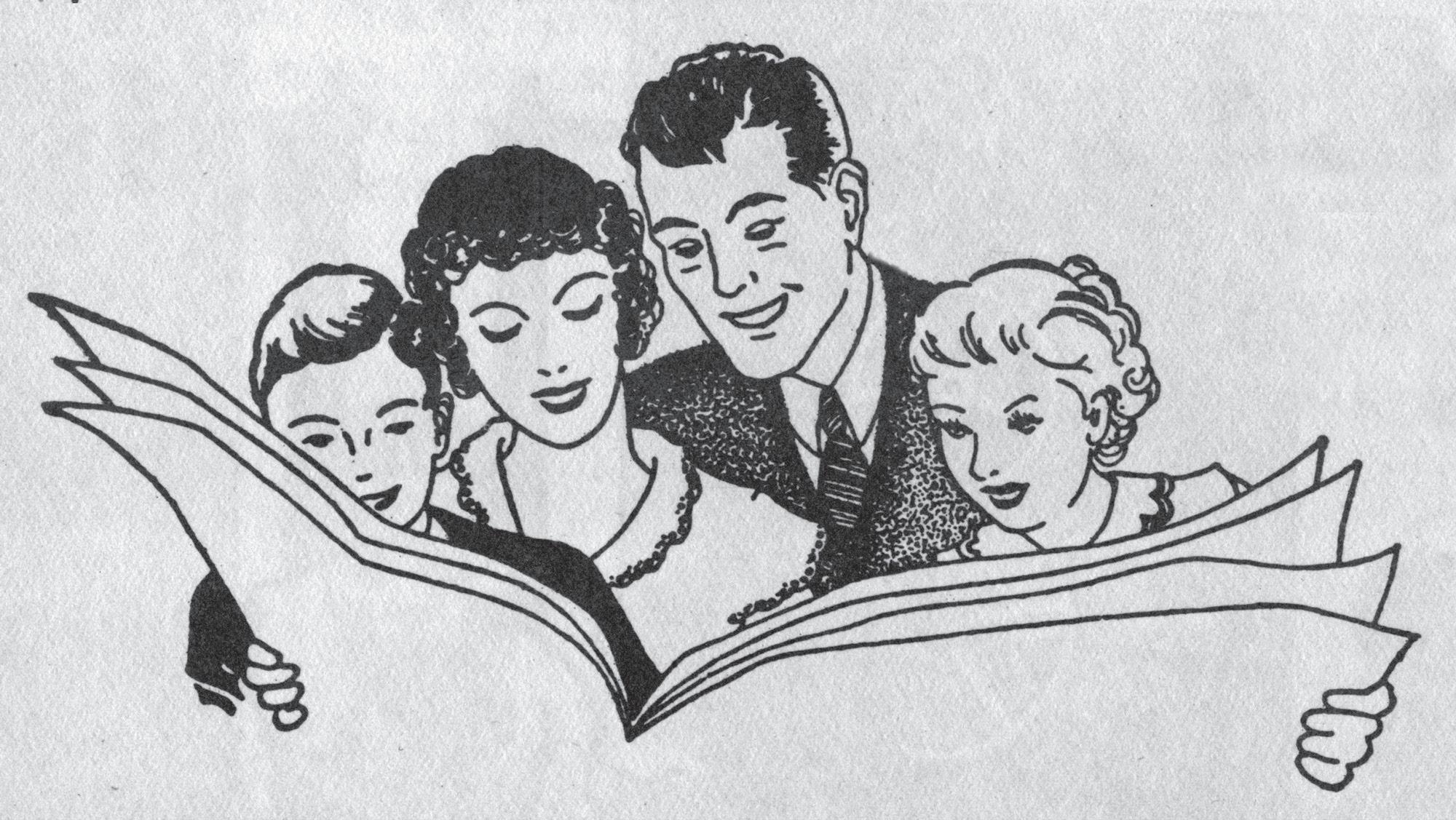


THAT IS THE QUESTION
by Ken Wilson Steppingstones to Recovery
Many people simply don’t like change. Change involves groovi ng new neuro-pathways in the brain which is hard work. Imagine, for instance, learning to play the piano!
It’s no wonder that alcoholics and addicts resist learning new skills to live without their old “best friend.” They know they need to change but are afraid to because they think they can’t live without it. So



they keep on with self-destructive patterns which get worse by the year.
Many times it involves bidding farewell to most of their close friends, too – the best listening ears they’ve ever had and the most generous lenders ever.
Change isn’t easy. My initial training to be a counselor included learning to deal with the discomfort of change with some assigned exercises: Start sleeping on the other side of my bed, start shaving on the right side of my face instead of the left, learn a new route to work.


After doing the exercises, how easy it was to revert to old ways without even thinking about it!
The years have passed too quickly (38 in fact) When I turned 66 years old I tried to retire. Yay! I remember the first day at home. After an early cup of Folger’s Black Silk (the best!) I sat back


GREG LEOPARD PC
ATTORNEY AT LAW
in my easy chair and…did nothing. Just watched paint dry, so to speak. After a few days I called my daughter, who I had turned the business over to, and asked for my job back! Got it, too! That was over 8 years ago. This time, I’m really gonna hang it up! If I’m to check off my bucket list I have to give up a lot of activities I have loved doing – including writing this column, the first of which appeared in April 2016!
So I am leaving Steppingstones To Recovery to bright, younger counselors who are passionate about helping the suffering alcoholic and addict. I am very encouraged by the new young people coming to work in the addiction treatment field.
I am deeply grateful to Dan Pearson, Editor, for the privilege of this column appearing in the Medical Examiner. I never would have written so many articles (over 100!) without the discipline of his schedule and deadlines. If you have never met him, do know that he is an incredibly awesome and intelligent individual, very active in his church as well. The ME should get an award for its layout and content!
At this time of government shutdowns, budget cuts, and exponential increases in insurance premiums, treatment centers are challenged to keep their doors open. Professional help for recovery is still available, but it may require a more diligent search than formerly. Steppingstones (706-733-1935) will give assessments, recommendations, and referrals

at no charge. Let them point you to a fitting program and save you days of effort!
If your addicted loved one isn’t interested in change yet – come to the free community Family Workshop every Tuesday from 6-7:15 p.m. at Steppingstones (2610 Commons Blvd, off Boy Scout/ Washington Roads). You will find relief from grief and anxiety after a few sessions – promise! It will be a tremendous help in the face of the chaos addiction brings to the table.
Change isn’t quite so difficult when you have help. A month or so ago I mentioned losing 51 pounds in the program of WW (disclaimer: I get no perks from this unpaid ad!). I had to make some serious changes in my life and old eating habits, but they made it so much easier than trying to lose weight by myself! So goes treatment: you alone can do it, but you cannot do it alone if you’re like me. And I think you probably are!
Fortunately, I didn’t have to sleep on the other side of the bed again, and I still start shaving on the left side of my face.
So long.













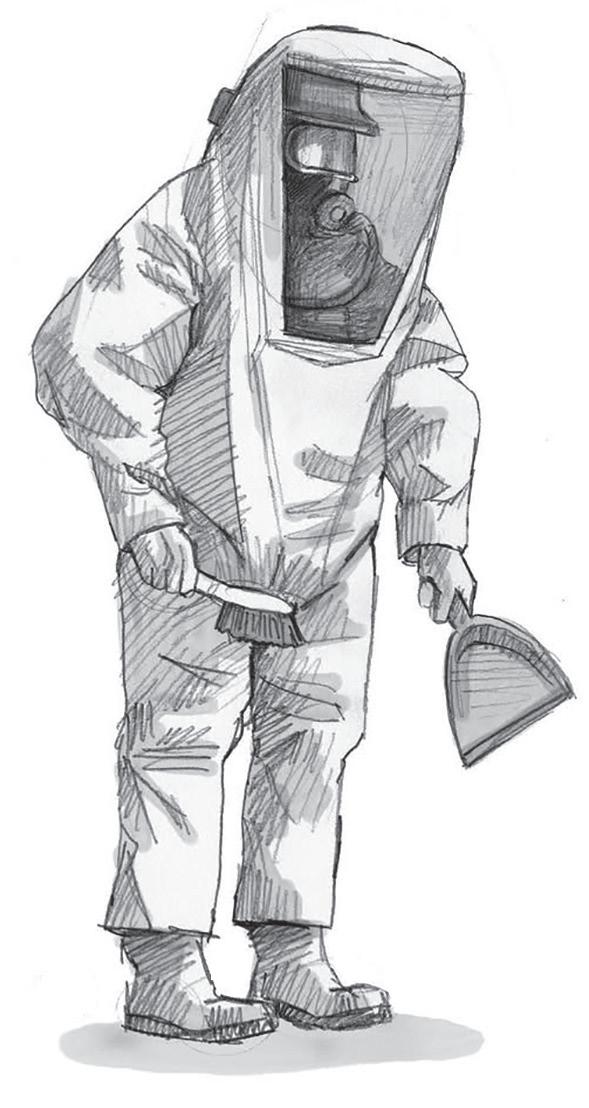




CRASH COURSE
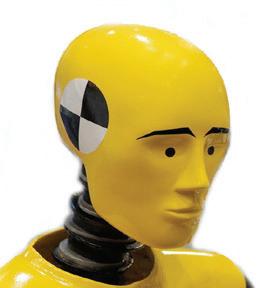
More Americans have died on US roads since 2000 than in World Wars I & II combined
One of the principles that is basic to safe driving is that we share the road with every other driver out there. That includes slowpokes and lead foots, big rigs and buses and dump trucks as well as Mini Coopers, mopeds and motorcycles.
But one of the most important (and simplest) applications of the “share the road” principle is how the road should be shared with emergency vehicles. It’s also one of the most ignored and/or abused traffic laws.
That is definitely odd when you consider how many traffic laws are the subject of a catchy rhyming phrase to help you remember them. How many can you think of that fall under that description?
Actually, we can only think of one: “Move to the right for sirens and lights.”
It’s not complicated, but you would never know it to watch motorists when an emergency vehicle enters the picture.
Some people speed up. Some drivers promptly stop, regardless of whatever lane they happen to be in at that moment. Some go left and stop in the suicide lane. Others ignore the emergency vehicle altogether and just drive normally.
Not too long ago in this space we wrote about a case where a fire truck was following an ambulance traveling west down Columbia Road from the direction of Bobby Jones. Both emergency vehicles had their lights and sirens activated. Following the lead of the ambulance, the fire truck pulled into the center lane to turn into the Spring Lakes neighborhood, but had to sit and wait for the driver of a black pickup truck that was barreling toward it well over the speed limit. Two cars in front of the pickup had ample time to stop, but the pickup driver barreled past them. Had police witnessed the pickup, its driver
would have been subject to a fine of up to $500 for failing to move over (assuming it was a first offense), 3 points on their license, plus court costs and other charges, to say nothing of the speeding violation and a separate citation for failure to yield to an emergency vehicle. It would have been a very expensive way to get to the traffic light in front of the Columbia Road Kroger (which was red when the pickup got there), a full 20 seconds ahead of the vehicles which did lawfully stop.
Let’s clarify the safe and simple and legal responses to emergency vehicles in two situations: when they are traveling down the road en route to an emergency; and when they are stopped on the roadside.
For a stopped police officer, fire fighter, tow truck driver, EMT or paramedic, the Move Over Law in Georgia does not specify left or right. It requires one of two options: 1. move into a lane not adjacent to the emergency vehicle(s), which would usually mean moving to the left if the emergency responders are on the right shoulder (but the opposite if they happen to be on the opposite shoulder); or 2. if a lane change is not possible, slow down to a “reasonable and proper” speed below the posted speed limit appropriate to the traffic and situation. There is nothing wrong with doing both: move over and slow down.
When it comes to moving emergency vehicles on their way to a call, Georgia law says “every other vehicle” other than the emergency vehicle shall promptly and safely move to the right and “shall stop” until the emergency or law enforcement vehicle has passed. In other words, “Move to the right for sirens and lights.” +
Editor’s note: This article previously appeared in an earlier edition of the Medical Examiner several years ago.


3 WAYS
TO DO A TIME-CHANGE RESET
Take a poll about the time change and you’ll discover one more thing people are unable to agree upon. Like there’s any shortage! But overall, people prefer what we just did — gaining an hour — over losing that precious hour in the spring. Only 12% of Americans surveyed this year (2025) support keeping the current twice-a-year time change. The problem is, how to change it? About half the population wants Daylight Saving year-round and the other half wants Standard Time year round. Meanwhile, we need to deal with the present reality, which is important to do.

IT’S DARK IN THERE
Our internal clock, the one we all have, cannot see the clock on the wall, and wouldn’t care if it could. Our circadian rhythms take time to adjust. Ignoring them puts people in bad moods and further messes up our freshly-scrambled sleep schedule even more.
• The Result: We cannot simply change to the clock-onthe-wall setting overnight and not expect sleep issues. Let’s say you usually go to bed after prime-time TV shows and the late night news. By the time you normally hit the hay, it’s pushing midnight. If you immediately start relying strictly on what your newly reset wall clocks say, your bedtime is now close to 1:00 am. Your internal clock is going to give you grief.
• The Reset: Even though you fell back (rather than sprang forward), you almost have to mentally stick with Daylight Saving Time for several days. In other words, when you see a clock tonight that says 11:00, you have to remind yourself that, from a circadian perspective, that’s actually 12 midnight. Your goal should be lights out 15 minutes early, that is, by 11:45 internal clock time (10:45 alarm clock time). Do that for a couple of nights, then add another 15 minutes so that now you’re aiming for a 10:30 bedtime (which your body still thinks is 11:30).

IT’S LIGHT OUT THERE
Light has a greater effect on people than most of us realize. For example, scientists say that exposure to bright LEDs that mimic daylight in the evening hours should be avoided.
• The Result: The message may be more subtle than we can feel, but bright lights and computer/tablet screens give off light wavelengths that our eyes and brains can misinterpret as “Good morning sunshine!” Such lights wake us up, so they should be avoided during evening hours.
• The Reset: Softer lights that are on the warmer end of the color spectrum send calming, soothing “it’s time to wind down” messages. Next time you buy light bulbs, look for the Kelvin rating on the package. The lower the number the warmer the light.

DRUGS HAVE FEELINGS TOO
Our medications are also affected by the time change.
• The Result: Medications that we take on a schedule — like clockwork — need to stay on that schedule, and the body might not react well if it’s kept waiting a full hour longer than it’s used to.
• The Reset: With some medicines we might need to ease into Standard Time in 15-minute increments, just like we do with our sleep schedule. Diabetics especially need to check their insulin pumps and glucose monitors to make sure they have the correct adjusted time. +


TRYTHISDISH
by Kim Beavers, MS,
RDN, CDCES
Registered Dietitian Nutritionist, Chef Coach, Author Follow Kim on Facebook: facebook.com/eatingwellwithkimb
MAPLE WALNUT ENERGY BALLS
This heart-healthy snack doubles as a delicious sweet treat!
Ingredients
• 2 cups walnuts, plus ¼ cup extra for coating
• 1 cup old-fashioned oats
• ½ cup Medjool dates, pitted (around 7)
• 3 tablespoons maple syrup
• 2 teaspoons vanilla
• ¼ teaspoon salt
Instructions
Add the walnuts, oats, dates, maple syrup, vanilla and salt to a food processor. Blend until smooth and the dough forms together into cohesive balls, about 1 to 2 minutes. Finely dice the remaining walnuts and add to a plate. Form the dough into 16 balls and roll each ball in the diced walnuts to coat. Store the energy balls in an airtight container in the fridge for up to a week or in the freezer for up to three months.

Yield: 16 energy balls (1 energy ball per serving)
Nutrient Breakdown: Calories 179, Fat 11g (1g saturated fat), Sodium 37 mg, Carbohydrate 18 g, Fiber 2 g, Protein 3 g





Diabetes Plate Plan: 1 Other Carbohydrate
Recipe courtesy of California Walnuts. https://walnuts.org/recipe/ maple-walnut-energy-balls/
DOWNTOWN 990 Telfair St 706-724-0900
AUGUSTA W. AUGUSTA 3954 Wrightsboro Rd 706-863-9318
MARTINEZ 4014 Washington Rd 762-685-5555
803-593-8473






by Dan Pearson



CAPTION THIS
Check out our new reader contest on p. 16
Write your most appropriate, clever, or funny caption to the photo shown for a chance to win whatever cool swag we decide to give away!
Email your entry to Dan@AugustaRx.com
DEADLINE TO ENTER: 5:00 PM FRIDAY, NOV. 14, 2025 We’ll announce the winner in our next issue!
ACROSS
1. _______ center
7. Pretense
11. Grass, cut and dried
14. Like many insects
15. Windy City MLB nickname
17. James Brown venue (with “The”)
18. Excess nitrogen in the blood
19. Elder
20. Field official, for short
21. Wife of Jacob
22. Paradise
24. Baby powder
26. Island in the Bay of Naples
29. Type of bag
32. Hand operated implements
35. Small screen movie network
36. Having a tail (Anatomy)
39. Sign on many doors
40. Verizon sold this in 2021
41. _______ someone out
42. Gotta Get a Message to You Bee Gees song beginning
43. Climbing vine 44. Artist studio 46. Born 47. Cinemas’ first name 49. Gehrig’s legacy (abbrev)
50. Gardening tool 52. Type of code 54. Partner 56. Identical
58. WRDW’s CBS partner
61. Connected 65. _______ trial
______ Pack (of the 1960s)
72. Thawed DOWN
1. The Night Before Christmas beginning 2. What the time sometimes is
3. Abbrev. after many a poem
4. More repellent
5. Tuneful
6. Love dearly
7. Quarrel
8. Faint cloud of smoke/vapor 9. In the air
10. Encountered
11. ________ Queen
12. Home of 50 nations
13. Beatles’ refrain word
16. Common greeting
23. Queasiness
25. Consumed
26. Preside over
27. Over
28. Someone with more than one wife or husband
30. Idealized or picturesque scene
31. Intolerance of another race
33. Canal keeper?
34. Contemptuous smile
37. Appropriate
38. Definite article
44. The “A” of IPA
45. Former worker
48. Place of competition
51. _____ floss
53. Support for a cornice
55. _______ clock
56. Cut or burn leftover
57. Jessica of Hollywood
59. ______ sale
60. Talon
62. Salmon that has spawned
63. One of the Great Lakes
64. Something consisting of two elements
66. Annoy
E X A M I N E R S U D O K U
DIRECTIONS: Every line, vertical and horizontal, and all nine 9-square boxes must each contain the numbers 1 though 9. Solution on page 14.
QUOTATIONPUZZLE

DIRECTIONS: Recreate a timeless nugget of wisdom by using the letters in each vertical column to fill the boxes above them. Once any letter is used, cross it out in the lower half of the puzzle. Letters may be used only once. Black squares indicate spaces between words, and words may extend onto a second line.
Solution on page 14.
the listed letters following #1 are the first letters of the various words; the letters following #2 are the second letters of each word, and so on. Try solving words with letter clues or numbers with minimal choices listed. A sample is shown. Solution on page 14.


THEBESTMEDICINE

ha... ha...

Alady doing her grocery shopping came out to the parking lot only to discover she had locked her keys inside her car.
Completely bewildered as to what to do, she looked around in desperation for some source of help, but the only thing she saw was an old rusty coat hanger on the ground nearby.
“Dear Lord,” she prayed, “I know people use these to open locked cars, but I have no idea how. Please Lord, help me.”
Not ten seconds later a tattooed, bearded biker happened to pull up next to her car.
“Kind sir,” she said, “I locked my keys inside my car. Can you use this hanger to open it?”
“No problem,” he said, getting off his Harley. In less than a minute her car was unlocked.
Overcome with emotion, she hugged the man and looked heavenward and said “Thank you God for sending me such a nice man!”
The biker laughed. “Lady, I’m no nice man. I just got out of prison for stealing cars.”
The lady hugged the biker even tighter. “Thank you Lord,” she said. “You even sent me a professional!”
Moe: Have you ever been to a Taylor Swift concert?
Joe: Oh definitely. It was an epic experience, like three hours. Plus I bet she must have had 50 costume changes.
Moe: That’s what I’ve heard. Supposedly they lost one of her dresses one time and they made her a perfect new one backstage in like ten minutes.
Joe: Yeah, Taylor Swift’s tailor’s swift.
Moe: I read the other day that Taylor Swift is named after Albert Einstein.
Joe: That makes zero sense.
Moe: It’s true. He was named in 1879 and Taylor Swift wasn’t named until 1989.
Moe: Do you know what kind of humor lifeguards like best?
Joe: Dry humor, I would assume.
Moe: What do you call a thirsty guy lost in the desert?
Joe: A well-wisher.
Moe: How was the bee arrested?
Joe: In a sting operation maybe?
Joe: I hate being single, man. I even asked my phone, “Siri, why am I so lame with women?”
Moe: What did she say?
Joe: She said “My name is Alexa, you moron.”

Staring at my phone all day has certainly had no Effect on ME!

If you live beyond the Aiken-Augusta area, or miss issues between doctor’s appointments — don’t you hate it when that happens? — we’ll command your mail carrier to bring every issue to your house!
NAME ADDRESS
CITY STATE ZIP
Choose six months for $26 or one year for $48 . Mail this completed form with payment to Augusta Medical Examiner, PO Box 397, Augusta GA 30903- 0397
Dear Advice Doctor,


Last week was supposed to be a crucial series of events at work, most of them involving me. Unfortunately I was sick as a dog and one of my assistants had to cover for me. I heard he did ok, but now I can’t shake the feeling that I just gave him a leg up on my own job and inadvertently handed myself a demotion — or at least derailed any raises or promotions for the time being. But what was I supposed to do? I really was sick.
— Apparently Not Superman
Dear Apparently Not,
I can certainly sympathize with your feelings. I am a dog owner too, so when it happens to me — when I’m sick as a dog — I know first-hand what a sick dog looks like. So like you, I’m speaking from personal experience and direct observation.
Fortunately, most dogs are pretty healthy, and people aren’t sick as a dog very often either.
But here is an interesting point I’d like you to consider: pet health mirrors human health far more often than we might expect.
Had you thought about that before?
For instance, if you get very little exercise, in all likelihood your dog will also have a sedentary lifestyle. That isn’t good for either one of you.
Another example: I haven’t read any studies on this topic, but from my own personal observation it seems like dogs that are grossly overweight quite often have overweight owners, far more often than they have skinny owners.
Most dogs are extremely attuned to the attitudes and moods of their masters. A relaxed person will usually have a relaxed dog. On the other hand, someone who is on edge constantly, “alerting” to every little sound in the house or the neighborhood, will often transfer that high level of anxiety to their dog. Again, chronic high anxiety is not good for people any more than it’s good for our pets.
Granted, these observations don’t apply to every family and every pet. Perhaps they don’t in your case. But for every pet owner, it’s well worth contemplating your own lifestyle, how it affects your pet’s “lifestyle,” and how changes you might make can improve life for both of you.
I hope this answers your question.
Do you have a question for The Advice Doctor about life, love, personal relationships, career, raising children, or any other important topic? Send it to News@AugustaRx.com. Replies will be provided only in the Examiner.



THE MYSTERY SOLVED
The Celebrated MYSTERY WORD CONTEST
...wherein we hide (with fiendish cleverness) a simple word. All you have to do is unscramble the word (found on page 12), then find it concealed within one of our ads. Click in to the contest link at www.AugustaRx.com and enter. If we pick you in our random drawing of correct entries, you’ll score our goodie package!
SEVEN SIMPLE RULES: 1. Unscramble and find the designated word hidden within one of the ads in this issue. 2. Visit the Reader Contests page at www.AugustaRx.com. 3. Tell us what you found and where you found it. 4. If you’re right and you’re the one we pick at random, you win. (Winners within the past six months are ineligible.) 5. Prizes awarded to winners may vary from issue to issue. Limited sizes are available for shirt prize. 6. A photo ID may be required to claim some prizes. 7. Other entrants may win a lesser prize at the sole discretion of the publisher. 8. Deadline to enter is shown on page 12.

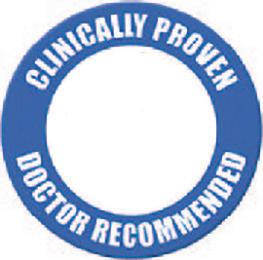

PROFESSIONAL DIRECTORY
ACUPUNCTURE
Dr. Eric Sherrell, DACM, LAC
Augusta Acupuncture Clinic 4141 Columbia Road
706-888-0707 www.AcuClinicGA.com
DERMATOLOGY


Georgia Dermatology & Skin Cancer Center 2283 Wrightsboro Rd. (at Johns Road) Augusta 30904 706-733-3373 www.GaDerm.com


Parks Pharmacy 437 Georgia Ave. N. Augusta 29841 803-279-7450 www.parkspharmacy.com

Evans Chiropractic Health Center Dr. William M. Rice 108 SRP Drive, Suite A 706-860-4001 www.evanschiro.net

Karen L. Carter, MD 1303 D’Antignac St, Suite 2100 Augusta 30901 706-396-0600 www.augustadevelopmentalspecialists.com

to Recovery 2610 Commons Blvd. Augusta 30909 706-733-1935


Nursing|Companion 706-426-5967 www.zenahomecare.com

Bashir Chaudhary,
Jason H. Lee, DMD 116 Davis Road Augusta 30907 706-860-4048 Floss ‘em or lose ‘em!










